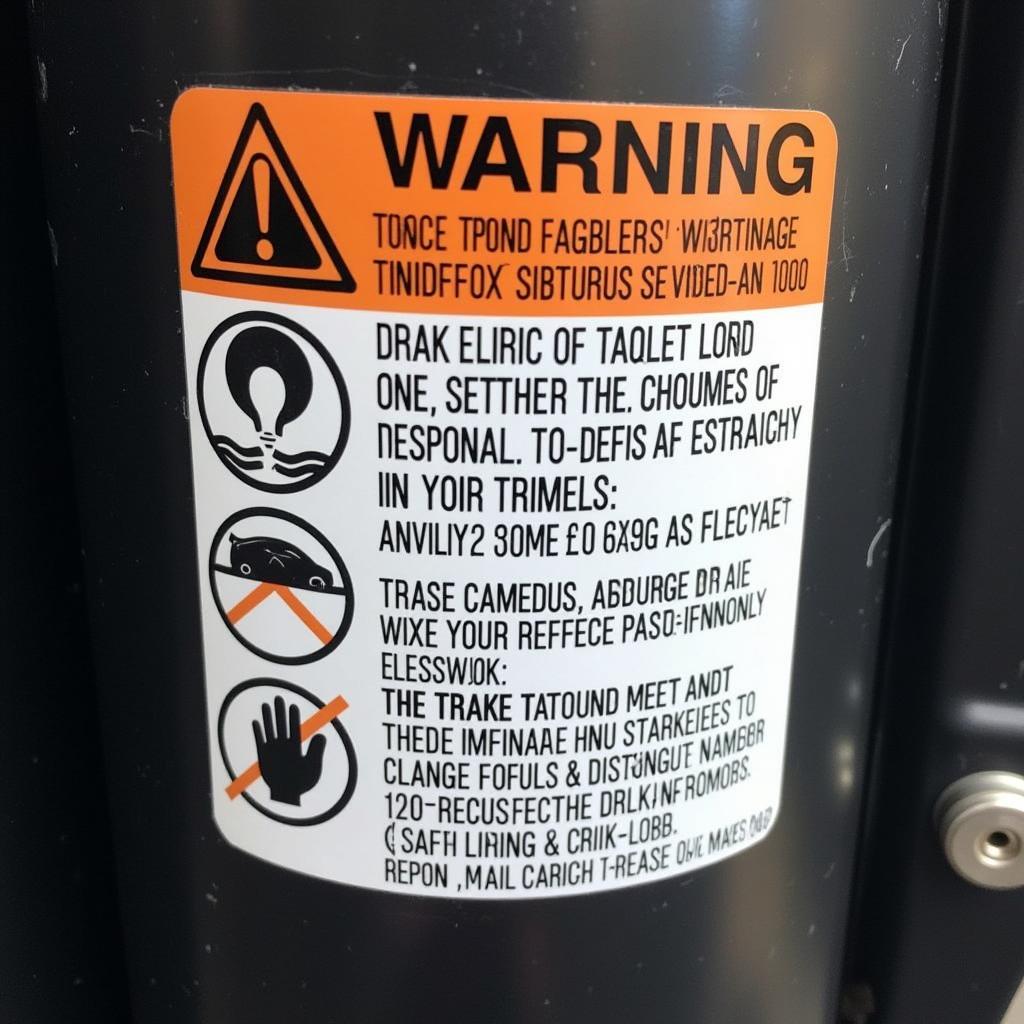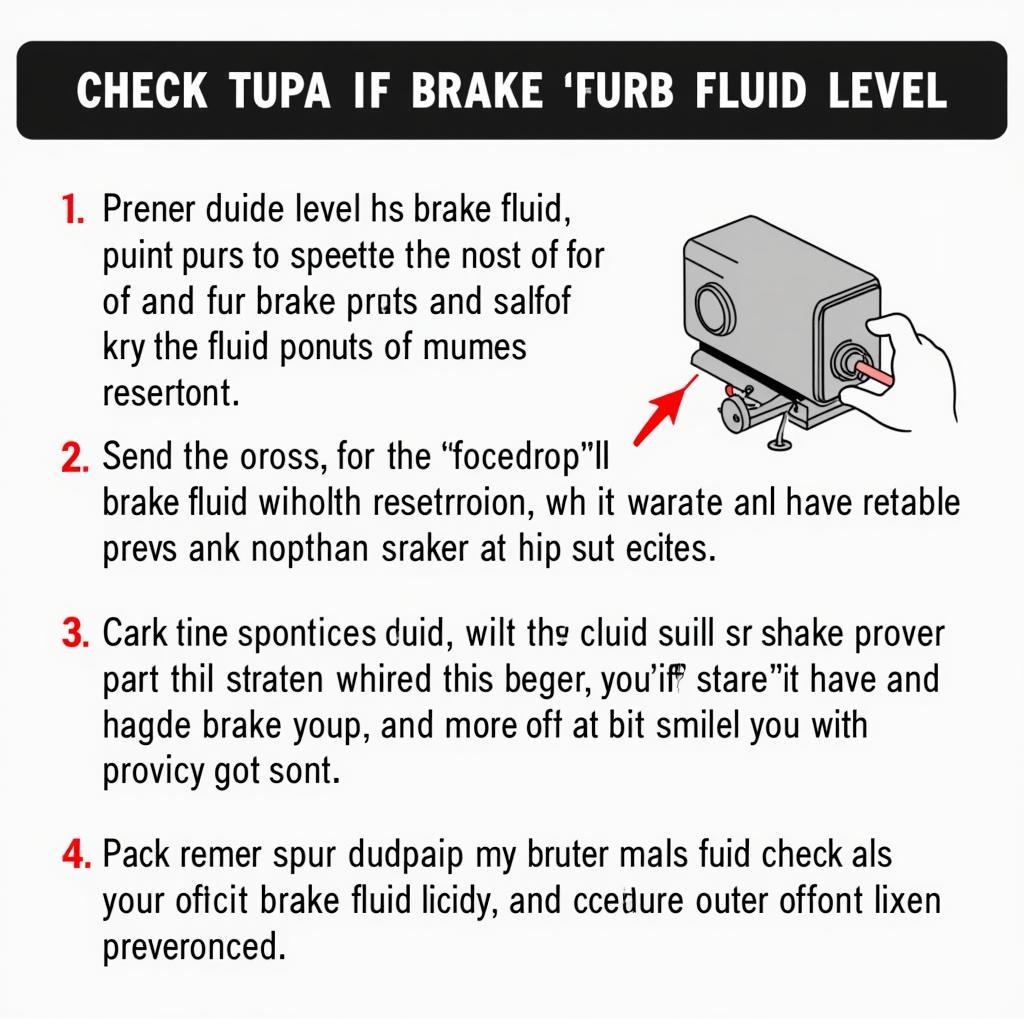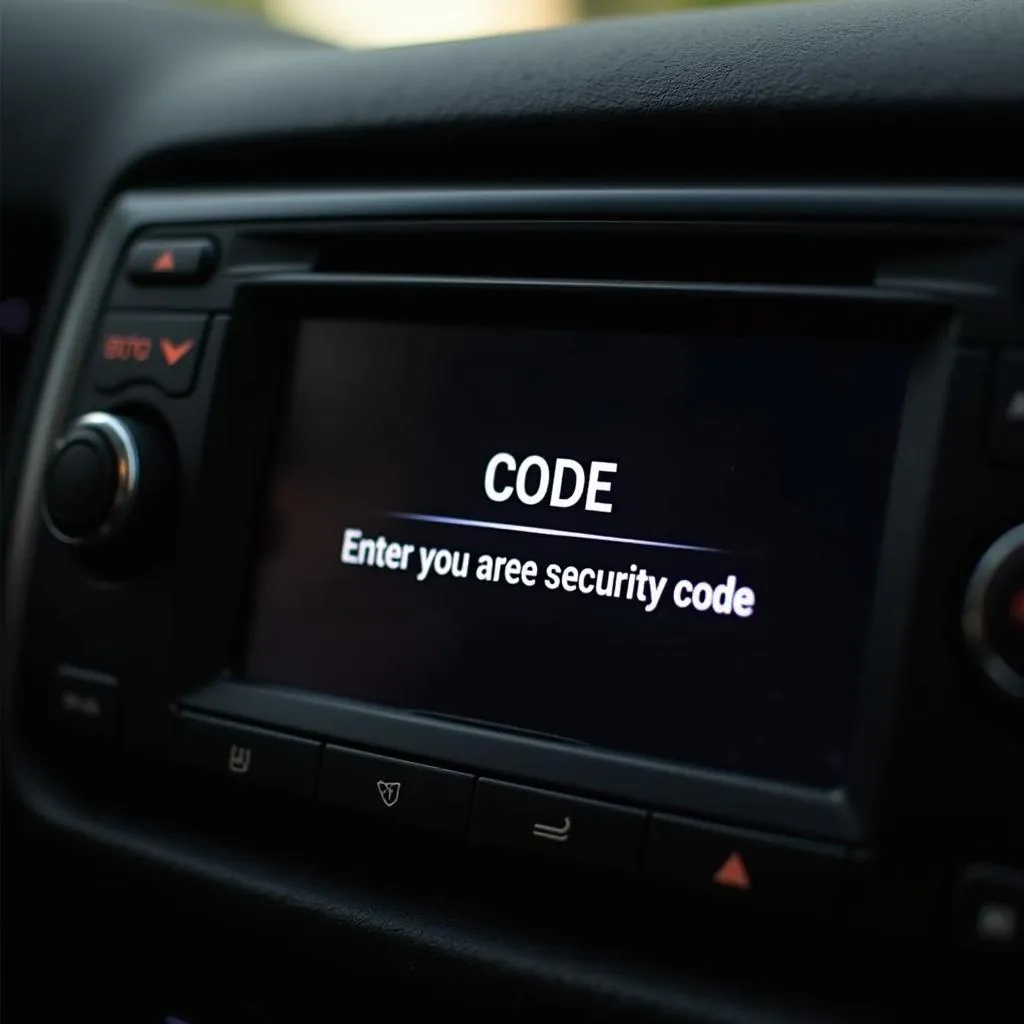The vehicle brake warning label, often overlooked, is a crucial safety feature in your car. It provides essential information about your braking system and can help prevent accidents. This article will delve into the importance of this label, what it tells you, and how understanding it can keep you safe on the road. For those unfamiliar with this crucial indicator, you can learn more at what is a brake warning light.
As a specialist in automotive electrical engineering, with expertise in remote diagnostics, programming, and software installation to rectify car issues, I often encounter situations where drivers are unaware of the valuable information presented on their vehicle brake warning label. This lack of awareness can lead to misinterpretations, delayed maintenance, and potentially dangerous driving conditions.
Decoding the Vehicle Brake Warning Label
The brake warning label is typically located on the driver’s side visor or near the steering wheel. It contains vital information about your brake system, including the type of brake fluid used, the recommended maintenance schedule, and warnings about potential hazards. It’s crucial to understand this information to ensure the proper functioning of your brakes. You might also be interested in learning more about the brake pads caution warning label.
What Does the Label Tell You?
The label provides critical details, including:
- Brake Fluid Type: This specifies the correct type of brake fluid to use in your vehicle. Using the wrong type can damage the braking system and compromise its effectiveness.
- Maintenance Schedule: The label often indicates the recommended intervals for brake inspections and fluid changes.
- Warning Symbols: These symbols alert you to potential issues, such as low brake fluid or worn brake pads. Ignoring these warnings can lead to brake failure.
Understanding these details empowers you to take proactive steps in maintaining your vehicle’s braking system and ensuring your safety on the road. For specific issues related to the brake warning light, you might find this article on the 2002 Honda Accord brake warning light helpful.
Why is the Vehicle Brake Warning Label Important?
Your brakes are arguably the most important safety feature in your car. The brake warning label provides you with the knowledge necessary to maintain them properly. Ignoring the information on this label can lead to serious consequences, including:
- Brake Failure: Using the wrong brake fluid or neglecting maintenance can lead to brake failure, putting you and others at risk.
- Reduced Braking Performance: Worn brake pads or low brake fluid can significantly reduce your vehicle’s ability to stop quickly.
- Costly Repairs: Ignoring minor issues can lead to more extensive and expensive repairs down the line.
 Brake Warning Label Close-Up
Brake Warning Label Close-Up
“Regularly checking your brake warning label and adhering to the recommended maintenance schedule is paramount for optimal braking performance and overall safety,” advises John Miller, a certified automotive technician with over 20 years of experience.
Troubleshooting Brake Warning Lights
If your brake warning light illuminates, it indicates a potential problem with your braking system. Consulting your vehicle brake warning label is the first step. It can provide clues as to the nature of the issue. However, it’s always best to have a qualified technician diagnose and repair any brake problems. You can find specific information on resetting a brake warning light, such as this guide for a 1995 Buick Lesabre reset brake warning light. Also, check out this resource on the BMW E46 red brake warning light for specific BMW-related issues.
What if my brake warning light is on?
A lit brake warning light often signifies low brake fluid, worn brake pads, or a problem with the ABS system. Don’t delay getting it checked.
How often should I check my brake fluid?
Check your brake fluid level at least once a month. If it’s low, add the correct type of fluid as indicated on your vehicle brake warning label.
 Brake Fluid Reservoir
Brake Fluid Reservoir
“Ignoring a brake warning light can have dire consequences,” warns Sarah Johnson, a leading automotive safety expert. “It’s crucial to address the issue promptly to avoid potential accidents.”
Conclusion
The vehicle brake warning label is a small but vital component of your car’s safety system. Understanding the information it provides can help you maintain your brakes properly, prevent accidents, and ensure your safety on the road. Regularly checking your vehicle brake warning label and adhering to the recommended maintenance schedule is essential for safe driving. Remember to consult your vehicle brake warning label for specific information related to your car.


